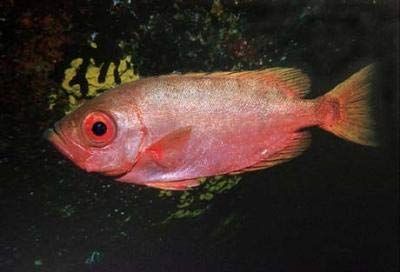Fish Cross 'Impassable Barrier' to Traverse Pacific Ocean

In "The Origin of Species," Charles Darwin discussed geographic features that could serve as "impassable" barriers to marine organisms living in shallow waters. One of the examples he gave was a 2,500- to 4,300-mile expanse of deep water that comes between the eastern and central Pacific Ocean.
For decades, scientists failed to find any marine species hardy enough to make the trek across the long, cold and dark divide.
Then about 10 years ago, Harilaos Lessios of the Smithsonian Tropical Research Institute (STRI) documented a first exception—two species of sea urchins that successfully make the crossing.
Now he has confirmed another exception—18 species of reef fish [see one and two of them].
Trans-Pacific cousins
Lessios' analysis of certain reef fish with similar body types, including two species of puffer fish and three species of parrot fish, on both sides of what is called the Eastern Pacific Barrier, shows they are genetically related. This indicates that the great divide is less impenetrable than claimed by the father of evolutionary theory.
"The barrier is impassable for most species, but a minority make it through," Lessios told LiveScience. His report, with STRI colleague D. Ross Robinson, was published in a recent issue of the journal Proceedings of the Royal Society B.
Sign up for the Live Science daily newsletter now
Get the world’s most fascinating discoveries delivered straight to your inbox.
Other types of reef fish found to make it across the divide include three species of surgeon fish, two species of wrass, and one species each of trigger fish, hawk fish, pipe fish, goat fish, squirrel fish, chub, Big Eye and Moorish idol.
The reef fish, which generally live in shallow coastal waters, make it across this deep ocean expanse in the larval stage when they are swept along most likely by El Nino and La Nina currents, periodic movements of water that move faster than the region's normal currents. The El Nino currents transport larva eastward, while La Ninas carry them westward.
During periods when currents move more slowly, the larva probably die before completing the crossing.
Darwin on track
The study, which confirms close DNA relationships between different populations of the same fish species living on separate sides of the vast ocean expanse, indicates that genes (and the larvae they ride in on) move both east to west and west to east (some scientists previously thought the movement might only be west to east).
It is still correct to say that the Pacific divide is an effective barrier, Lessios wrote in the research report, but it is now clear that it is "sporadically permeable."
"Darwin was right to call the barrier impassable," Lessios said, "even though there were exceptions that he did not know about."
- Gallery: Rich Life Under the Sea
- Fish Holds Breath for Months
- Why Newborn Fish are Lousy Swimmers
- Marine Mammals Suffer Human Diseases
- Gallery: Underwater Explorers
Robin Lloyd was a senior editor at Space.com and Live Science from 2007 to 2009. She holds a B.A. degree in sociology from Smith College and a Ph.D. and M.A. degree in sociology from the University of California at Santa Barbara. She is currently a freelance science writer based in New York City and a contributing editor at Scientific American, as well as an adjunct professor at New York University's Science, Health and Environmental Reporting Program.












